An effective and stable stock market equipped with high pricing efficiency is one of the most important channels to advance the steady and rapid development of economy and to make economic growth benefit the general householders. The latest report released by the Research Center for Asset Management in the National Institute of Financial Research (NIFR), Tsinghua University, investigates the possible reason for relatively slow development of Chinese mutual fund industry. The result shows that market-timing error (MTE) of retail investors may be one of the reasons for their underestimation of the effectiveness of fund management. In return, they tend to directly participate in the stock market rather than choose the professional investment channel, i.e. mutual funds.
As the main way to institutionalize retail investment in the stock market, mutual funds play an important role in improving the quality of Chinese secondary capital market. However, in comparison with the US market, the development of mutual funds in China is relatively limited: the panel A of figure 1 shows that, although the actively-managed equity funds persistently outperform the passive market portfolio in China (not in the U.S. market), the asset under management of them is far smaller than the one in the U.S. in terms of GDP or stock market value. Moreover, the growth of fund industry is also relatively slower than that of stock market (Panel B).
Figure 1. Performances and Market Cap of Stock and Fund Market in China
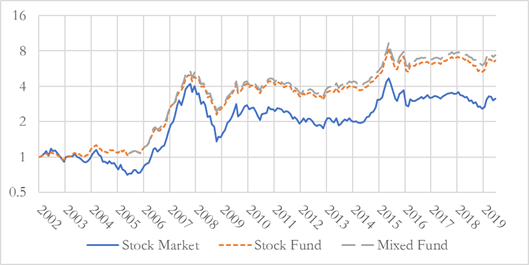
Panel A. Performances of stock market portfolio and the portfolio of all actively-managed equity mutual funds
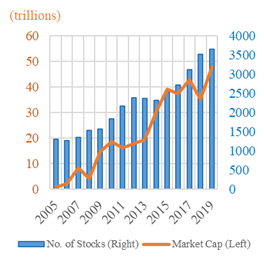
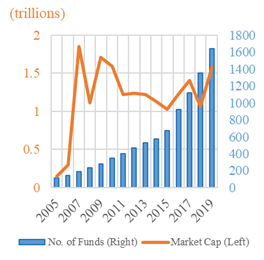
Panel B. the growths of stock market (left) and actively-managed equity mutual funds market
The report argues that one of the important reasons for retail investors to resist the mutual fund is as followed. Although mutual funds can create excess returns for investors in the long term, the MTE of retail investors damages their profits, resulting in their realized return (measured by the internal rate of return, IRR) being significantly lower than the buy-and-hold return (BHR). The retail investors may compare the realized return of fund with the BHR in the stock market (directly observed through the market index), which give rise to the illusion that fund management is ineffective. This partly causes the slow development of the fund market.
Based on the data of mutual funds in China, this report finds that MTE has caused retail investors to lose nearly half of return delivered by mutual fund industry. Figure 2 shows that, the market portfolio of mutual funds obtains a BHR of 11.75% annually, meanwhile the IRR realized by retail investors is only 6.55%. This phenomenon exists significantly in the fund products with different investment targets and return styles.
Figure 2. BHR of Fund Industry and IRR Realized by Retails Investors
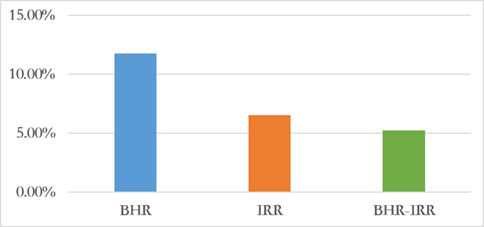
Panel A. Overall Fund Market
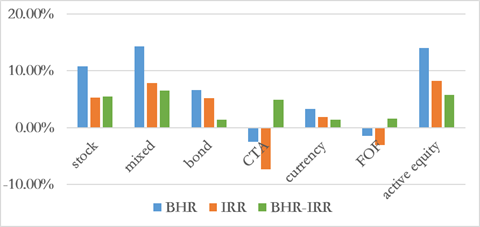
Panel B. Different Investment Targets
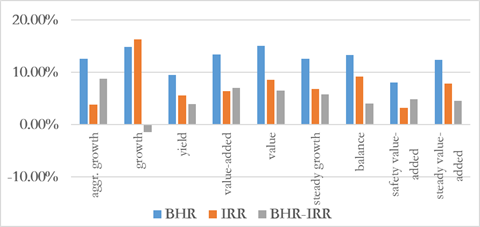
Panel C. Different Categories of Incomes
The passive BHR of stock market could be observed directly by stock market index. However, there is no widely accepted market index in the fund market, making the BHR of fund industry hardly perceived. Therefore, it is easy for retail investors to compare their realized returns in the fund market with the BHR in the stock market. Figure 3 shows that, although the BHR and IRR of fund market are higher than ones in stock market respectively, the IRR of fund market is slightly lower than the BHR of stock market.
Figure 3. Comparison between Funds and Stocks
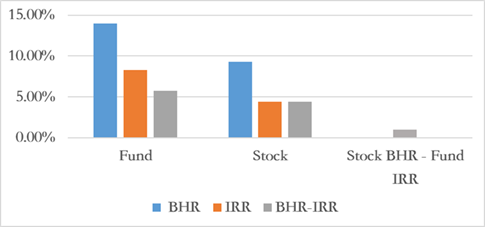
Further investigation shows a chasing of retail investors’ cash flows on funds’ historical performance: an inflow into funds when the market performs well, and an outflow when it performs poorly. However, this kind of characteristic of fund flow negatively predict the future performance of fund market, causing the IRR of retail investors to be lower than the BHR of funds. Result of the cross-sectional analysis shows this phenomenon is more pronounced among funds with higher market synchronization (a higher market beta or a lower idiosyncratic volatility). The possible reason is that market timing is more valuable among these funds, making the subscription and redemption of their holders to be more frequent. However, the market timing of them is inaccurate in general, making them lose more among these funds.
Figure 4. Fund Flow and Market Performance
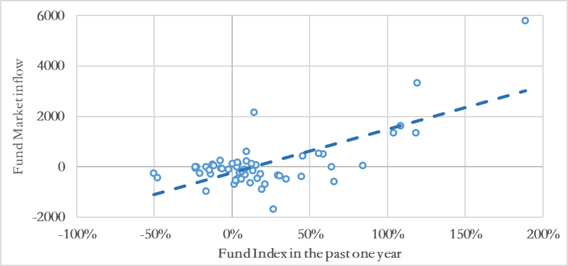
Panel A. Historical Performance and Fund Flow
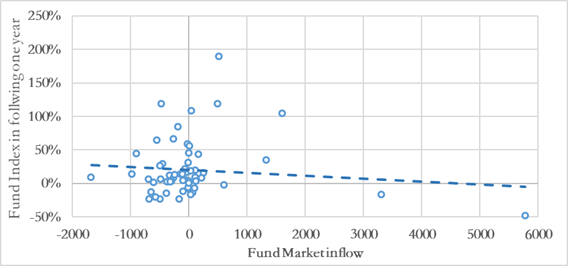
Panel B. Fund Flow and Future Performance
Inspired by the results shown above, this report gives the following suggestions:
The mutual fund industry can design and construct several standardized industry indexes, making the BHR and the superiority of mutual funds observable for the retail investors.
In addition, regulators and the fund industry should strengthen the financial education on retail investors so that they can have a better understanding on the dynamic relationship between returns, risks and liquidity. This may decrease the level of inefficient fund flows caused by excessive optimism and panic of retail investors.
In summary, these suggestions are expected to give a better play to the role of mutual funds in the market. They may also help to improve the allocation efficiency of financial market, and the investment outcomes of retail investors.
Author information:
Jianfeng Yu is Jianshu Chair Professor of Finance at PBCSF, Tsinghua University, and Director of Research Center for Asset Management, Tsinghua University PBCSF-NIFR.
Shen LIN and Zhuzhu WEN are post-doctors at PBCSF, Tsinghua University, and research fellows of Research Center for Asset Management, Tsinghua University PBCSF-NIFR.
Wei HE is the Associate Professor at Institute of Chinese Financial Studies of Southwestern University of Finance and Economics.
Full report:
http://www.pbcsf.tsinghua.edu.cn/portal/article/index/id/5212.html